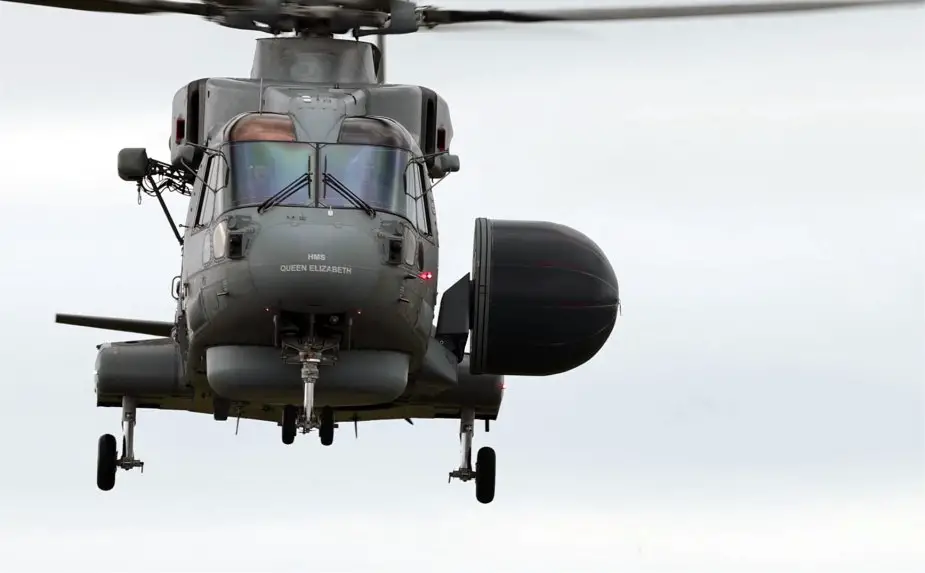Breaking news
New Merlin "Crowsnest" helicopter enters service.
According to information published by UK Navy on March 24, 2021, the first Merlin ‘Crowsnest’ helicopter – which scours the heavens with its radar looking for potential foes – will now begin operational training, ahead of the maiden deployment of HMS Queen Elizabeth this spring.
Follow Navy Recognition on Google News at this link
 Maiden flight of the first Crowsnest Merlin at Culdrose (Picture source: UK Navy)
Maiden flight of the first Crowsnest Merlin at Culdrose (Picture source: UK Navy)
The distinctive-looking helicopter – a large radar dome or ‘bag’ sticks out from the fuselage, earning the aircraft the affectionate nickname of ‘baggers’ – will provide airborne surveillance and the control of other aircraft (known as ASaC) in the carrier’s strike group.
The new generation of ‘baggers’ pick up the mantle of the Navy’s veteran Sea Kings of 849 Naval Air Squadron (now retired) – and like their predecessors will be based at Royal Naval Air Station Culdrose, which also provides anti-submarine Merlin aircraft to protect the Fleet.
Training by aircrews to use the new system, which allows crews to conduct air and missile defence as well as strike command and control, has been underway since the autumn.
The Merlins have been kitted out with new mission systems and radars from Thales Group by aerospace company Leonardo in Yeovil, overseen by Lockheed Martin.
Each helicopter has a crew of three: two observers (mission and tactical specialists) and one pilot. High above the fleet with their sophisticated sensors, they enable the carrier strike group commander to see, understand and react well beyond the horizon for any air or surface threats. They can also act as a control centre for strike operations between the carrier and the ship’s F-35 Lightning jets.
Commodore Steve Moorhouse, Commander UK Carrier Strike Group, who will direct HMS Queen Elizabeth’s first deployment with the help of his staff, said the new Merlins were the final pieces in the group’s large, complex jigsaw.
Commander Ian Varley, the Commanding Officer of 820 Naval Air Squadron, which is dedicated to protecting the carriers, their escorts and support ships, said his air and ground crew had been working tirelessly to prepare for the carrier mission; almost his entire squadron will be deploying with HMS Queen Elizabeth.
HMS Queen Elizabeth is due to deploy to the Mediterranean, Indian Ocean and into the Indo-Pacific region in an operational deployment with the UK’s allies and partners.
CROWSNEST uses a high power radar to provide long-range air, maritime and land tracking capabilities that will ensure early detection of potential threats and vital surveillance for the entire fleet.
CROWSNEST incorporates an updated version of a Thales Searchwater radar and Cerberus Mission System which are deployed as role fit kits along with the Merlin Mk2 helicopters. This will allow the Royal Navy to adjust the configuration of the airframe depending on the mission. We are working with our partners Leonardo Helicopters to design the modifications required to fit CROWSNEST onto the airframes.




























